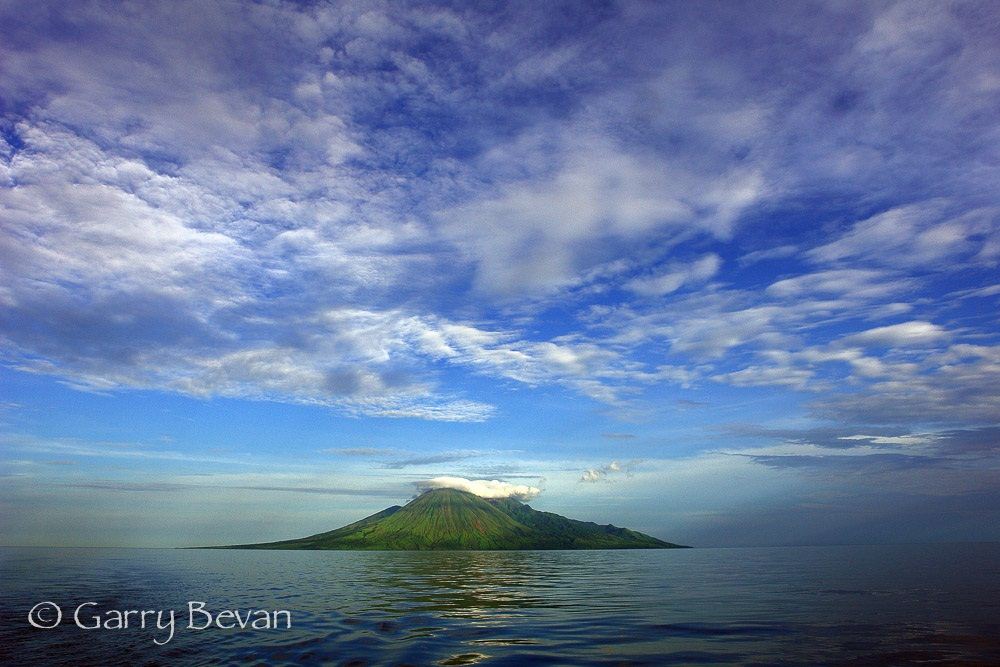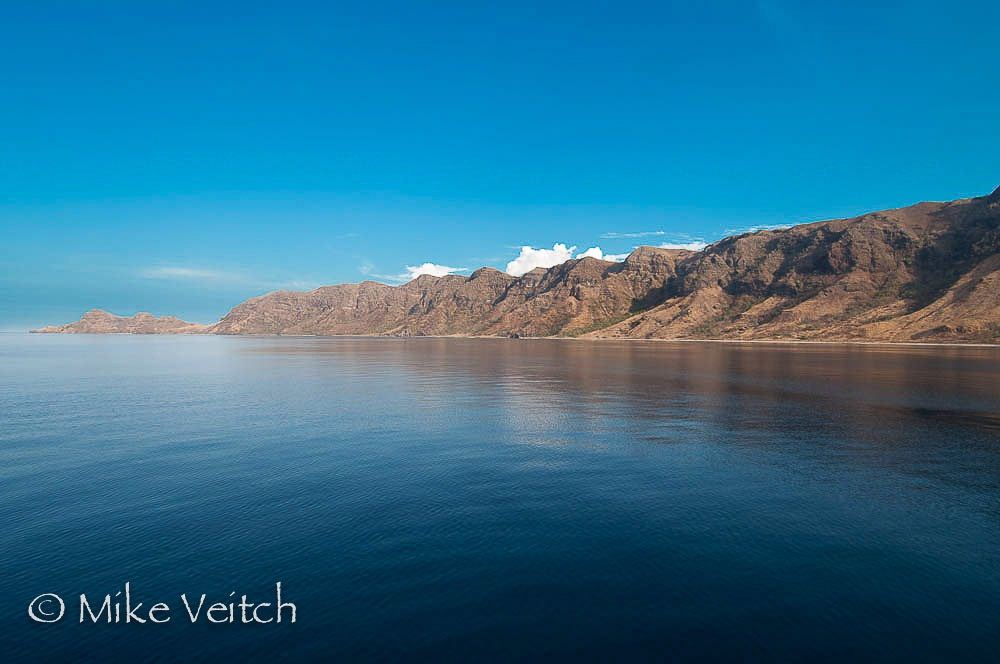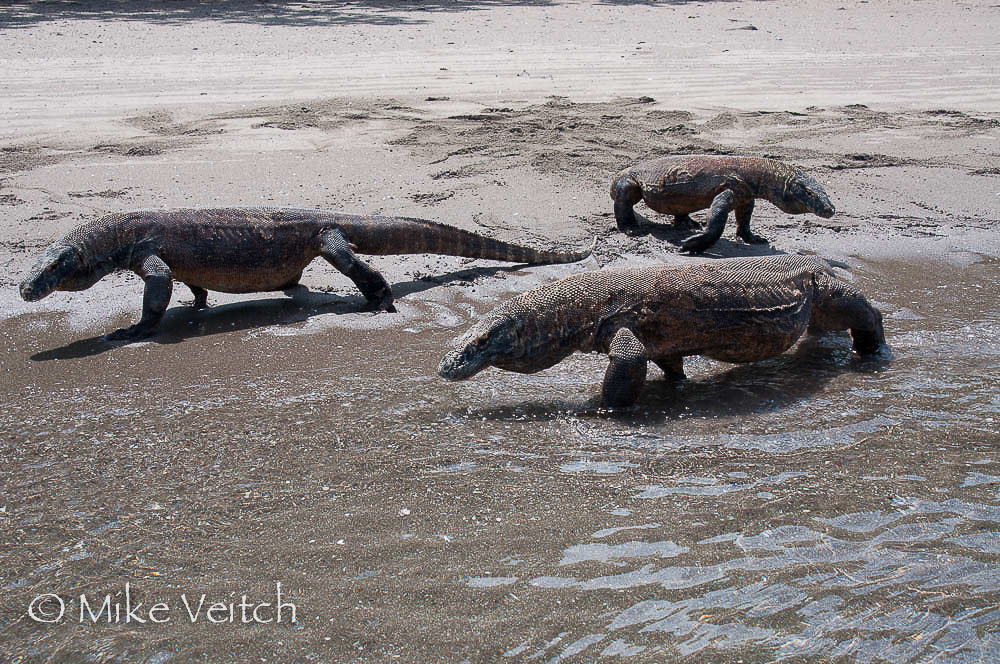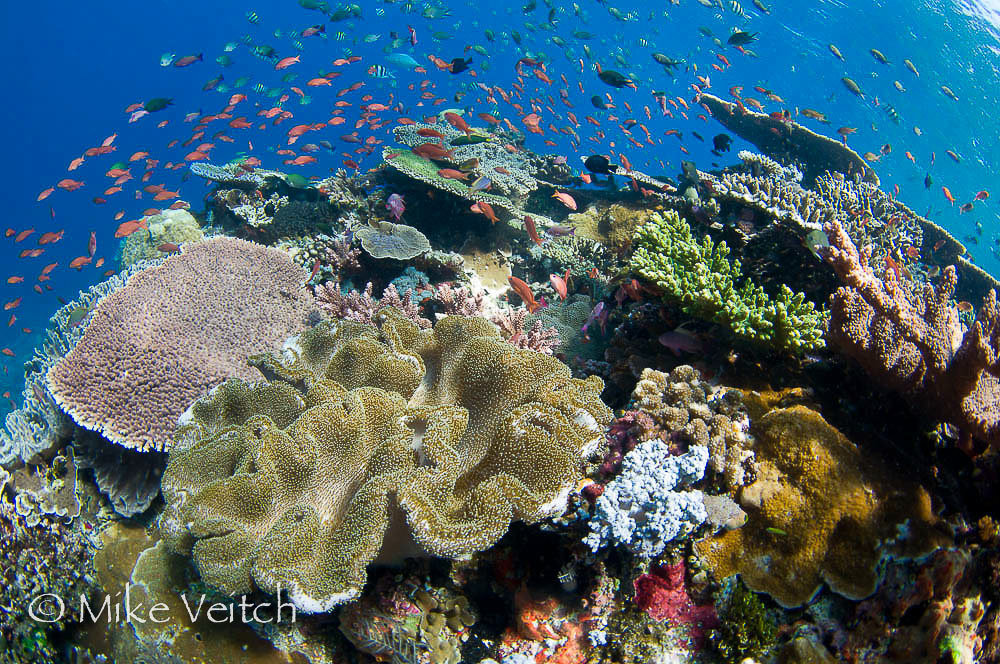Exploring an Active Volcano
Although not officially inside of the boundaries of the national park, Sangeang Volcano lies just a few nautical miles to the northwest of Komodo Island and its conical twin peaks dominate the horizon during spectacular sunsets in the northern regions of the park. Sangeang is an active volcano that is covered in savannah-like grasses and is home to small local settlements living a subsistence lifestyle herding cattle and tending crops. In addition to a couple of small villages to visit, the towering 1,900 metre peaks are very impressive backdrops for a day of topside exploration and walks along the beach. Although Sangeang remains active, the last ‘big’ eruption which required the evacuation of the islanders happened in 1988. One of the more unique marine attractions of Sangeang is a dive at “Hot Rocks” where volcanic gasses are constantly bubbling out of the black sand sea bed. The sand is actually warm to the touch and there are several vents along the reef where larger “plumes” of sulphur enriched warm water pump out of the bottom.
Exploring the Wilds of West Komodo Island
The majority of tourism in the Komodo National Park focuses on the western side of Rinca island or the eastern and northern edges of Komodo island, due in part to relatively calm water, but predominantly due to convenient access from Labuan Bajo town. For those looking for more adventure, the west coast of Komodo island offers miles of untouched beaches far from anywhere. With sweeping golden coloured sand, the bays and recesses along Komodo’s ‘wild coast’ offer pristine conditions for snorkelling, kayaking, and beach walking with ample opportunities to spot kites and sea eagles swooping through the air. From May – October the winds originate from the south and can create a reasonable sized swell along the west coast, so keeping an eye on the weather is of importance when cruising in this area.
A Guided Tour Through Dragon Infested Highlands
The best way to learn more about the history of the area, as well as the flora and fauna found in the park, is to participate in a guided tour of the islands with one of the resident team of National Park Rangers. Rinca Island and Komodo Island both have ranger stations where seasoned rangers lead a series of different adventures into the highlands. A selection of treks can last anywhere from one to five hours and often encounter a variety of wildlife such as deer, wild pig, snakes, monkeys, water buffalo, and of course Komodo Dragons. Talking to the rangers is also a great way to hear about their personal, and often hair raising experiences with the dragons!
Snorkelling World Class Coral Reefs
With over 1000 species of fish and 200 species of coral, Komodo is a marine lovers’ paradise. Healthy and colourful coral gardens surround all of the islands in the area and rise to very shallow depths where sun rays dapple the coral with light. The hard corals are generally located in safe and sheltered bays and these environments are appropriate for swimmers of all ages and skill levels. The snorkelling is among the finest in Indonesia with a variety of animals that can be regularly encountered: turtles, reef sharks, school upon school of small fish, anemone fish, and if luck is running high, even the endangered Dugong. For more adventurous and experienced snorkelers, an exhilarating drift snorkel can also be experienced by jumping into one of the narrow channels separating the islands for an extra jolt of adrenaline, as well as the opportunity to come face to face with larger denizens of the deep.
(end of page 2)



